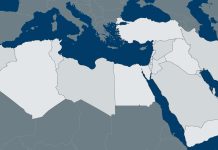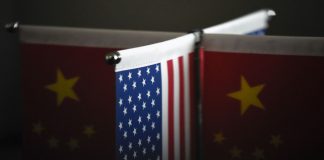Rain helps define the place where the forests end and the great grasslands start. It reveals how settlers decided where to build log cabins and sod huts. In the East, the rains supported dense populations. In the West, scarcity of water limited the size and number of big cities, as the ample reservoirs of the East didn’t exist. People lived in smaller communities scattered farther apart. Thus, these conditions helped define the political culture of the country. The sheer density of population in the East created an intense sense of community and complex social organizations that led to a substantial government presence. The relative dispersal of the population in the West created a different culture, built around individuals and families, and not around vast and complex social organizations. These are generalizations and, on both sides of the line, there are exceptions. But on the whole, there is truth to this generalization.
On the West Coast, there is a line of lights hugging the Pacific. Some parts of that region, like the Pacific Northwest, enjoy heavy rainfall. Other parts, like Southern California, experience some rainfall, supplemented with water from the Colorado River, delivered via aqueducts. That water flows from the Rockies and supplements the rainfall, allowing for the formation of cities like Los Angeles. In terms of population density and the need for complex communities and governments, this coastal region resembles the eastern United States more that it resembles the rest of the West.
Not all of the West is dark because of lack of water. The Rocky Mountains accumulate massive amounts of snow that feeds rivers like the Missouri and the Colorado. But their terrain makes heavy population density impossible. So it isn’t only the limited rainfall that creates the darkness in the western night. But it is one of the major contributing factors.
All of this would change if there were more water. And to be precise, the problem isn’t a lack of water – as the ocean and rivers provide plenty – but the type of water and its location. Ocean water needs to be desalinized before it can be used. And the Mississippi River, for example, has massive amounts of water, but most of it goes into the Gulf of Mexico. Therefore, there is plenty of water, but it is either the wrong kind or in the wrong place. The issue is the amount of energy needed to desalinize ocean water and move water through pipelines. It can be done, but the cost is prohibitive.
In the meantime, much of the local and regional politics in the West concern water. Much of the politics of the East concerns managing huge populations living in a small place. There are many divisions in the United States, but this is the fundamental division, more important even than north and south.






 Special Collection – The Middle East
Special Collection – The Middle East